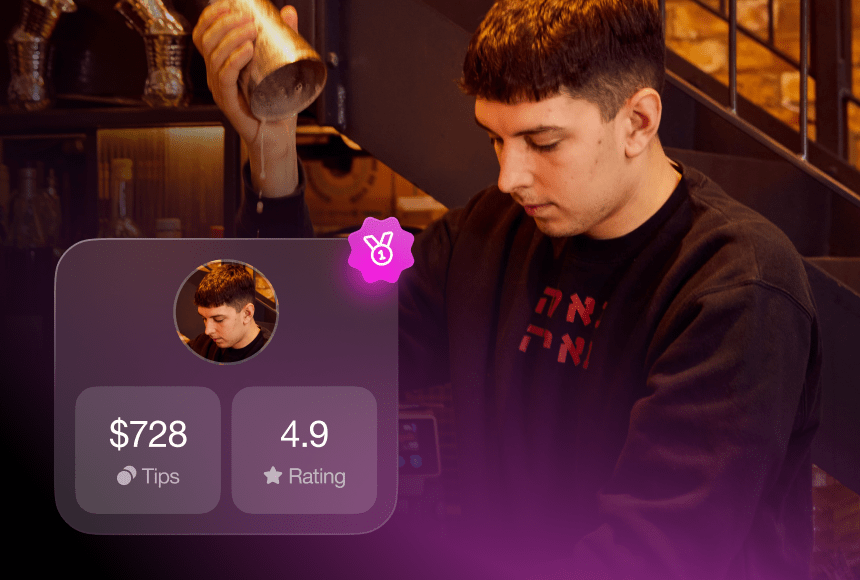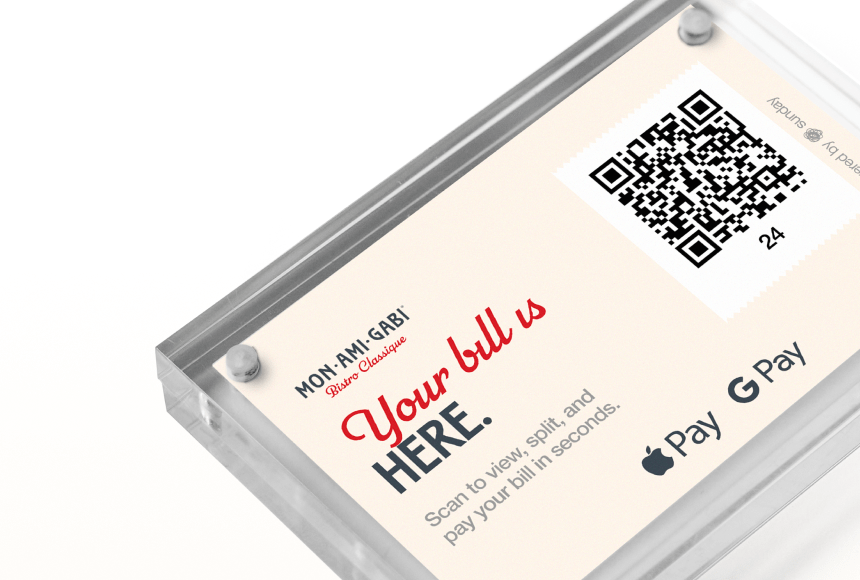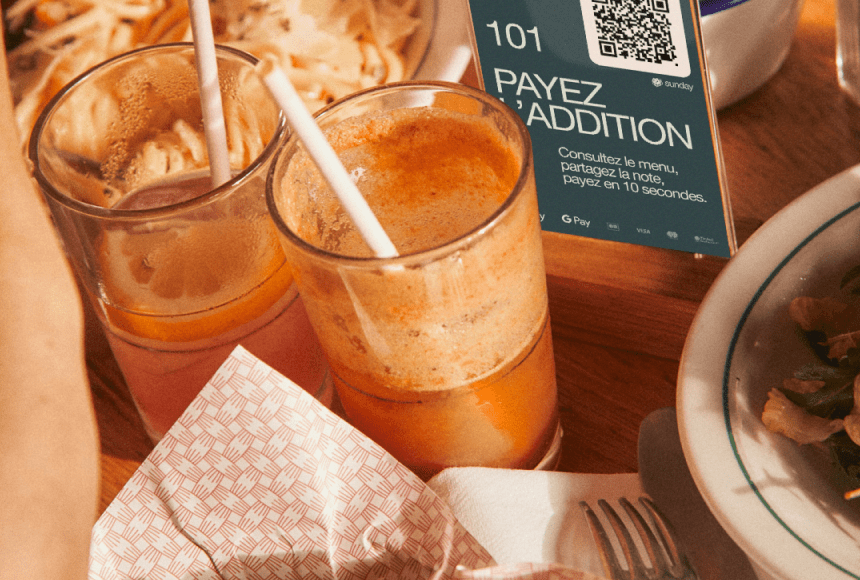
Why Reducing Wait Times Is the Key to a Thriving Restaurant
Slow Service: More Than Just an Inconvenience
Time is the true currency of any restaurant. Every minute of unnecessary waiting is a risk—lost sales, frustrated guests, overwhelmed servers, and, ultimately, a tarnished reputation. In an era where diners expect efficiency and convenience, slow service does more than disrupt a meal—it can erode loyalty, lower tip percentages, and lead to negative online reviews. According to the National Restaurant Association, 50% of restaurateurs in 2022 significantly increased their investment in technology to combat wait times and improve overall operations. Why? Because in an industry with tight margins, speed is a crucial competitive advantage.
Think of slow service like a leak in the kitchen: a small trickle can lead to significant damage if left unattended. From guests who walk out before ordering to lower daily table turns, the hidden costs add up quickly. And in a market where competition is fierce, even a small dip in your reputation could mean the difference between thriving or barely getting by.
The True Cost of Waiting: A Breakdown
It’s tempting to treat slow service as an occasional hiccup, but in truth, every delay peels away layers of your profit margin and your brand identity. Here’s a quick look at how:
- Lost Revenue: Guests who see long lines or a cluster of impatient tables often reconsider dining at the establishment. This can lower your average cover count per shift.
- Higher Labor Costs: When service is slow, you often need more staff on the floor or in the kitchen, which drives up labor expenses.
- Reputation Damage: Today’s diners are eager to share experiences—positive or negative. Slow service can lead to a flurry of bad Google reviews, impacting future bookings.
- Reduced Tips: Servers rely heavily on tips. The slower the service, the less satisfied guests will be when it’s time to settle the bill.
- Staff Burnout: When a dining room is out of sync, servers scramble to recover. This added stress can cause rapid turnover in a notoriously demanding industry.
When you add these factors together, the cumulative cost becomes alarming. On the surface, a three-minute delay in bringing water to a table might not appear catastrophic, but multiply that across multiple steps of service, multiple parties, and multiple days, and you’ll see a problem that can balloon fast.
Spotlight on a Missed Opportunity: A Brief Case Study
To illustrate the domino effect of slow service, consider a neighborhood bistro that prides itself on locally sourced dishes. Despite warm décor and an exciting menu, guests started leaving lukewarm reviews about the extended wait times from ordering to food delivery—and especially the sluggish bill settlement process. The restaurant was well-loved for its artisanal dishes, but a persistent pattern of delayed check payments started to overshadow the culinary experience.
One Friday night, the bistro turned away five groups of customers who had arrived to find a packed foyer and visibly frustrated diners already inside. The daily revenue shortfall was around $800—just from those turned-away tables. Over the weekend, two negative Google reviews explicitly cited wait times and slow checkout. Beyond losing the immediate sales, the bistro also harmed its long-term reputation. With fewer weekend reservations on the books, the restaurant’s next month looked more uncertain.
Even though the ownership responded to the reviews, apologizing for the inconvenience, the damage was done. The real culprit behind these losses was slow service, especially at checkout. By the time the check arrived and payment was processed, many customers felt the overall pace overshadowed the otherwise great food and ambiance.
Why Technology Matters in Speeding Up Service
While a polite, attentive server is vital, modern technology can enhance that human touch rather than replace it. Customers crave personal interaction; they also appreciate quick, hassle-free service. Here’s where digitized solutions come into play:
- Seamless Payment Screen: Handheld devices or in-table tablets let customers pay on the spot. No more waiting for the server to bring the check or run cards separately.
- Quick Reordering and Upsells: Digital menus on phones or tablets suggest items, so the server can spend more time providing personalized attention rather than scribbling down basic orders.
- Loyalty Tracking: Integrated systems record customer preferences and reward points instantly, eliminating the multi-step process of punch cards or manual data entry.
- Automated Tips and Google Reviews: Encouraging tips and online feedback at the payment step leads to better tip percentages and more positive experiences shared publicly.
These features, when deployed correctly, streamline service during the most critical parts of a customer’s visit. And since the most memorable parts often happen at the end—when they’re ready to tip, pay, and leave—a modernized payment solution can leave them on a high note instead of a frustrated one.
Harnessing the Power of QR Codes
QR codes have become ubiquitous in the restaurant world, and for good reason. With a simple scan, guests can access the menu, order what they need, apply a promo code, tip, and finalize payment. Minimizing the back-and-forth dramatically reduces staff workload and wait times, while still allowing for that personal “How was everything?” exchange from servers.
QR codes can also gather immediate feedback. Some systems prompt the customer to leave a short review on Google right after payment—a critical moment of emotional satisfaction. This not only boosts your online profile but also captures real-time impressions. There’s no better way to gather genuine feedback than catching a diner in the afterglow of a delicious meal.
What Modernization Really Looks Like
When some restaurant owners hear “modernization,” they envision screens replacing human contact. In reality, modernization means aligning technology to elevate, not eliminate, the human element. Consider these key areas to address:
- Contactless Payment: Use a user-friendly payment solution that allows customers to pay via their smartphones, sign quickly, tip seamlessly, and share their reviews online without any awkward delays.
- Kitchen Automation: Real-time order tracking, kitchen display systems, and automated inventory alerts reduce miscommunication between waitstaff and kitchens.
- Reservation and Waitlist Management: Comprehensive platforms send text updates when a table is ready and gauge real-time occupancy.
- Data Analytics: Sales reports, diner preferences, and menu performance metrics help you tailor your offerings more precisely to what your customers crave.
The goal is to simplify tasks prone to time-consuming errors—like manual processes—so that your in-house talent can focus on what they do best: providing an unforgettable culinary experience.
A Quick Look at the Numbers
Implementation costs can sometimes hold operators back. Yet technology investments frequently pay for themselves faster than you might think. Below is a simple example to show how modernizing certain aspects can impact profitability. (The figures are illustrative, but they reflect common industry outcomes.)
| Factor | Before Modernization | After Modernization |
|---|---|---|
| Average Table Turn Time | 75 min | 60 min |
| Tables Served Per Shift | 40 | 50 |
| Average Check | $25 | $25 |
| Daily Revenue | $1,000 | $1,250 |
Here, simply reducing table turn time by 15 minutes enables a 25% increase in the number of tables served per shift, which translates to a higher daily revenue. Even if modernization tools represent an initial investment, the long-term gains typically outpace upfront costs. Speedy service means happier guests, more positive reviews, and higher earnings over time.
Overcoming Common Obstacles to Modernization
Despite the clear benefits, some restaurant owners resist technological upgrades. Common obstacles include:
- Fear of Losing the “Personal Touch”: Owners worry that digital ordering or payment might alienate guests. In fact, a well-implemented digital system frees servers to engage more meaningfully.
- Cost Concerns: Payment terminals, tablets, and point-of-sale updates come with a price tag. Yet the return on investment—even over six to 12 months—can be dramatic when factoring in increased table turns and fewer errors.
- Staff Hesitation: Employees may feel intimidated by new devices or workflow changes. Offering training sessions, hands-on tutorials, and clear incentives (like higher tips) can alleviate these fears.
- Technical Glitches: No technology is perfect, and early bugs might appear. Work with dependable, reputable vendors and keep lines of communication open between your staff and tech support.
Realistically, introducing new systems won’t be entirely smooth. However, if you consider slow service as a silent drain on your business, you’ll see that failing to upgrade is the more costly risk.
How a Lightning-Fast Payment Solution Changes the Game
One of the biggest choke points in dining is finalizing the check. In a busy restaurant, a server might juggle multiple tables, beverages, and last-minute dessert orders. Meanwhile, customers anxiously wait for the check, wave the server down, or glance at the time.
Modern payment solutions often integrate a simple QR code that customers can scan to pay immediately. They can split bills, add a tip, and even share reviews on Google—but only if the solution is designed with user experience in mind. This streamlined method doubles as a brand booster, turning an awkward waiting period into an effortless transaction. At sunday, for instance, our approach is user-friendly and quick, letting the server step in when needed to maintain personal rapport, rather than bogging them down with repeated back-and-forth.
This leap in service speed not only drives table turnover but also elevates staff morale. When servers aren’t mired in menial tasks, they can do what they love—making sure diners feel welcomed, heard, and appreciated.
Emphasizing the Human Element
Although technology can vastly improve efficiency, it should always complement human interaction, not replace it. Your servers, hosts, and cooks are the soul of your restaurant. They share stories, build rapport, and anticipate needs. Automation and digital tools simply help orchestrate a smoother dining experience, allowing staff to focus where it counts.
Customers still crave genuine connections—especially now, when experiences have become as valuable as the meal itself. Combine that personal warmth with a frictionless process at the table, and you’re striking the perfect balance between tradition and innovation.
Practical Steps to Start Modernizing
If you’re convinced that slow service might be costing you more than you realized, consider these practical ways to begin modernizing:
- Evaluate Your Current Processes: Track how long each step—from seating to final payment—takes and identify your biggest bottlenecks.
- Prioritize Quick Wins: Upgrading your payment terminal or adopting QR code payment could show immediate benefits in table turn times.
- Train Your Team: Effective adoption depends on staff training. Provide clear instructions and demonstrate how tech can enhance their tips and reduce stress.
- Solicit Feedback: Ask regular customers how they feel about more modern methods. Often, you’ll discover they appreciate speed and convenience more than you’d guess.
- Measure and Adjust: Continuously track your KPIs—like daily revenue and average table turn time. Use the data to refine your approach.
A Fresh Kind of Dining Experience
When you reduce the barriers caused by slow service, everything else that makes your establishment special has room to shine. The flavors pop, the atmosphere enthralls, and your staff can truly show off their expertise. Modernization, when done well, is about re-architecting the restaurant experience so that every moment flows seamlessly into the next.
And diners? They’ll notice. Not just in the absence of frustration, but in the newfound ease, the sense that you respect their time and comfort. Word travels fast, especially when accompanied by a five-star review.
Continuing the Conversation
Embracing technology to eliminate the hidden costs of slow service isn’t a passing trend—it’s your lifeline to staying relevant and profitable. As more diners turn to online reviews and seek frictionless experiences whenever they eat out, adopting modern solutions becomes less of an option and more of a necessity.
Whether you run a small family-owned bistro or a bustling chain, a faster, smoother service can spark fresh opportunities for growth. If you can keep the soul of your restaurant intact—nurturing personal connections and highlighting your unique culinary style—while also ensuring that each step is as efficient as possible, you’ll see immediate and lasting benefits.
Slow service can cost you more than dollars—it can undermine your reputation, damage staff morale, and push loyal customers to explore alternative dining options. On the flip side, a streamlined, modern approach creates a restaurant environment where people want to return again and again, telling their friends, leaving glowing reviews, and tipping happily.
The Next Step Forward
Speed and warmth can coexist harmoniously. By combining innovative tools with friendly customer care, your restaurant can reduce inefficiencies, increase table turnover, and enhance each diner’s experience. Ultimately, it’s about recognizing that the modern diner’s appetite is as much about convenience and positive interactions as it is about the meal itself.
So if you’re tired of seeing customers glance at their watches, wave impatiently for the check, or exit with a hint of disappointment, it’s time to consider modernizing your approach. In doing so, you’ll elevate your reputation, boost staff satisfaction, and ensure that no revenue-earning opportunity slips silently through the cracks. Slow service is a hidden cost you no longer have to bear—especially now that the right solutions are well within reach.
Find out more today
Drop us your details below and we’ll reach out within the next 24h
Get the full, detailed picture.
sunday elevates your business with insightful data, instant feedback and precise analytics.




